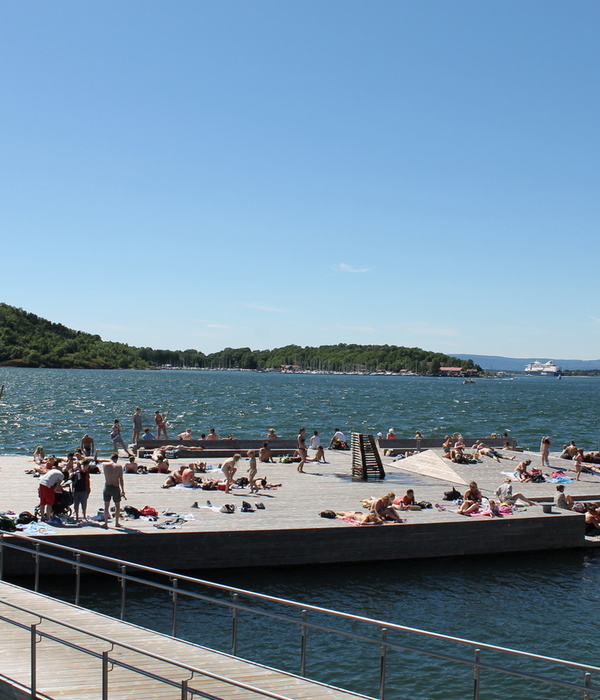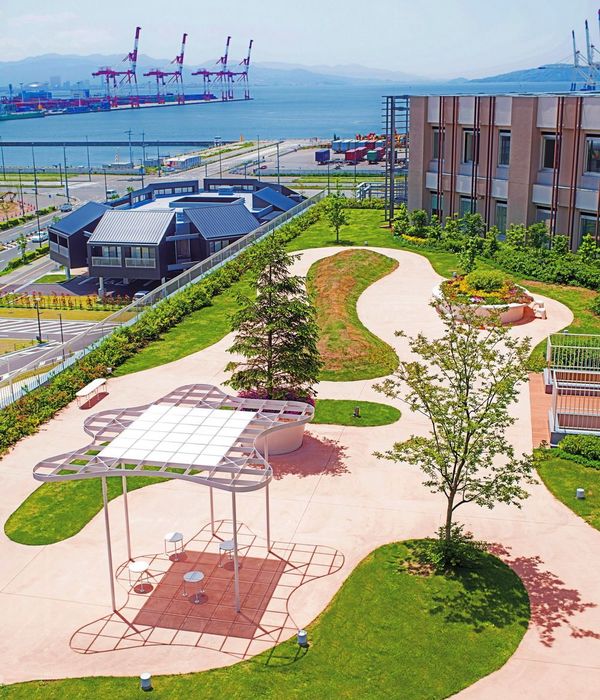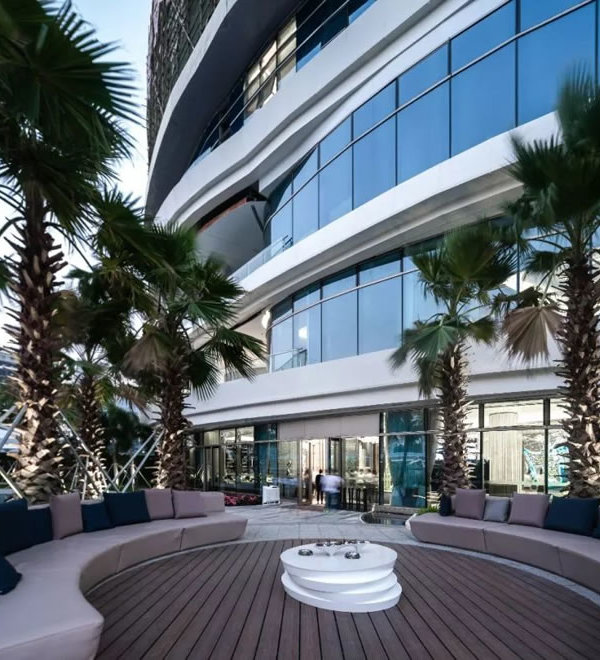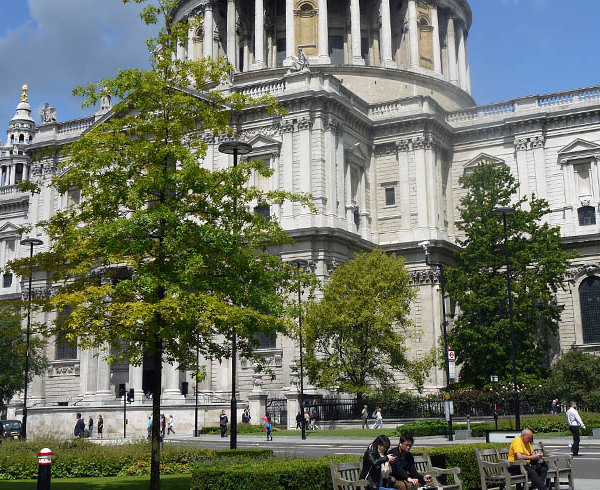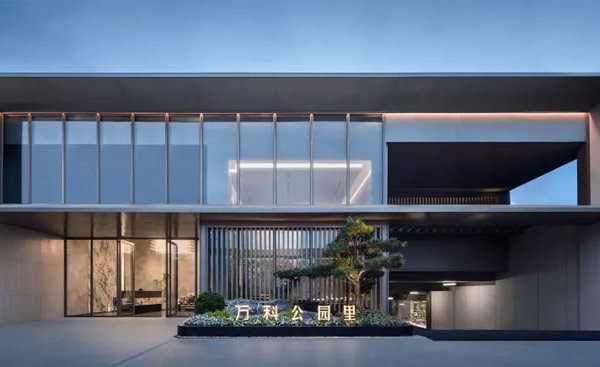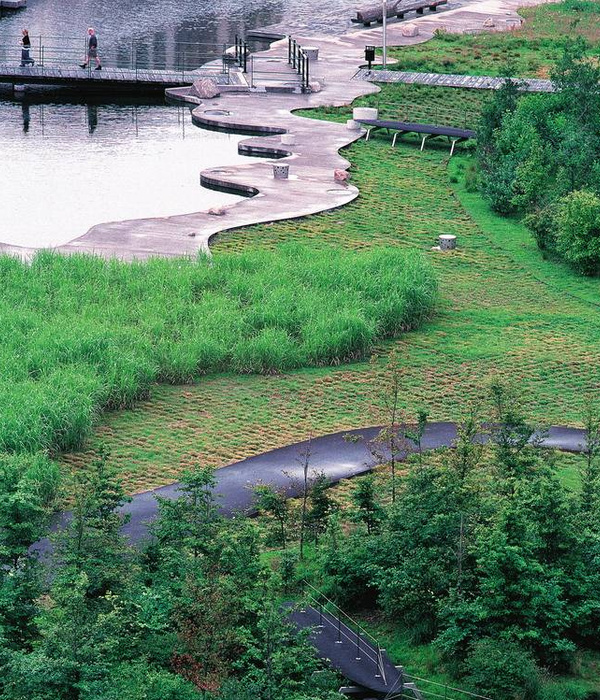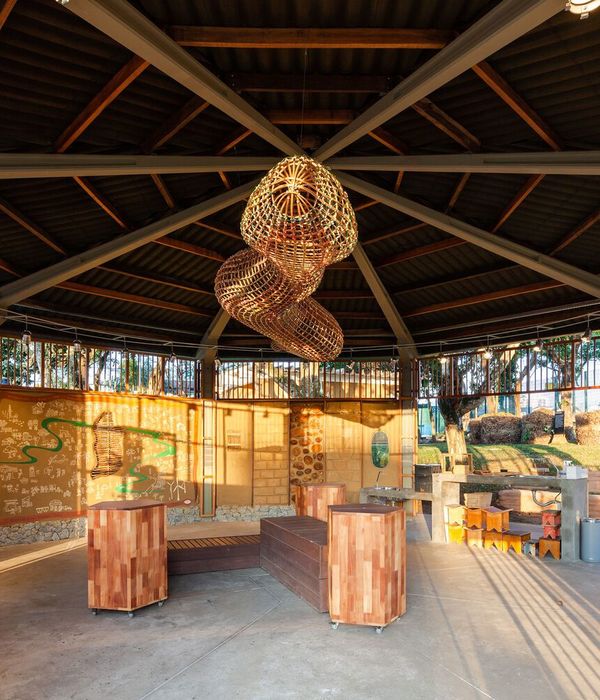本设计以牡丹亭戏剧的历史剧本为背景,结合导演对戏剧编排的需求,反思传统素材在当今文化语境下的再现方式。从而以新中式为主导思想,考虑如何对传统元素进行演化为今所用。以唤起对过去的记忆,又不失当代性。以此作为从现代城市进入演艺园区内的连结性的过度节点。
This design takes the historical script of Peony Pavilion drama as the background, meanwhile, considers the director’s demand for drama arrangement to reflect the way that traditional materials are reproduced in contemporary cultural context. Therefore, taking “the new Chinese style” as the leading idea, consider how to evolve the traditional elements for today, to evoke memories of the past without losing the contemporary. As a connecting node from the modern city into the virtual performance park.
▼抚河沿岸场景,view from the river front
在快速流变的历史背景下,我们将选择性地拾取主流及根本性意识,并予延续。建筑作为媒介来表现人与自然的关系,不仅在过去被古人强调,今天的我们依然在遵循并渴望着。在这一渴望中,我们重新认识我们的媒介并更新我们的媒介。木结构及院落式布局作为历史悠久的传统建筑特点,我们今天可以在空间及结构形式上继续延续这一记忆。
In the context of rapid change, we will selectively pick up mainstream and fundamental awareness and continue. Architecture as a medium to express the relationship between human and nature has not only been emphasized by the ancients, but also today we are still following and longing for it. In this desire, we re-recognize this medium and update them. As a long-established traditional architecture, wooden structural building and courtyard lifestyle, we can continue this memory in terms of structure and space today.
▼区位图,location map
作为文昌里历史文化街区的延伸,场地比邻城市主干道——赣东大道与零散落着老建筑在其岸边的抚河,以及一些居住建筑。而从城市方向,公园整体将是排他性的,被围墙或建筑与周边居民区明确分割开。于是这个场地的自主性显得比较突出。在这一自主的场地内各个不同行为需求的建筑(游客服务中心、办公、排演厅及宿舍)将找到各自的位置以显现其个性。
▼总体剖面图,project section
It’s the extension of the historical street of Wencangli, and next to the main road and Fu river and residence area. However, the whole performance park is quite excusive zone, which is fenced by walls and buildings from city. So the project is more like a packed gift of the city. In this site, different type of program can place themselves and demonstrate their own character.
▼东侧总体立面,east facade overall view
针对四个主要功能块(游客服务中心、办公、排演厅及宿舍)的空间特征:游客中心为开放型的公共空间;办公则较为私密的公共空间;宿舍为封闭的私密空间;排演厅为半封闭的公共空间。在总体布局上,大体上利用游客中心、办公和宿舍形成“U”型的半围合式的院落形态,以此为排演厅创造内向型的公共空间。同时考虑原有保留建筑及会议接待对面向演艺园区的视线需求,从而形成“U”型及“I”型的两条空间结构控制线。
▼概念分析图,design concept
▼总体布局构思分析,massing diagram
The architectural layout of the service centre is aimed at the spatial characteristics of the four main functional blocks (tourist centre, office, rehearsal hall and dormitory): the tourist centre is an open public space, the office is a closed public space, the dormitory is a closed private space, the rehearsal hall is kind of in-between space. we use tourist centre and dormitory and office to form an “U” shape layout in order to compose a courtyard kind of introversive space for rehearsal halls. At the same time, taking an account for the original preserved building, and the line of the view of the conference, which is a part of the office, is result in two spatial control lines of “U” and “I” shape.
▼东立面局部,east facade partial view
▼游客服务展厅,service center exhibition area
▼游客服务大厅,service center lobby area
▼服务大厅视野,view from the lobby
在这两条控制线下,游客中心结合保留建筑(博物馆)以狭长的形态联系入口广场及演艺园区入口。较为私密的宿舍则于北侧一字排开,而办公部分则于南侧设置使得其中的会议接待可以获得较好视线,这两部分同时与东侧的“I”型控制轴形成半围合式的内院空间。
Under these two control lines, the visitor center is arranged in conjunction with the preserved building (museum) to connect the entrance square and the entrance of the performance park with a narrow exhibition corridor. The office part is next to exhibition corridor and set on the south side of the site so that the conference reception can get a better view. While the more intimate part – dormitory – is lined up with the north side. In the center of them, it’s a courtyard space which takes on the program of rehearsal, there are three free standing rehearsal halls.
▼排演厅内院场景,inner yard of the performance park
▼内院局部视角,partial view of the inner yard
从传统的木结构形成的门形结构形式为基础,演变出“Y”形的结构形式。从而对这两种形式重新灵活运用,以产生本设计特有的结构形式。
Based on the form of the traditional wood structure, the “Y” shape is evolved. The two type structure units are re-used to produce a unique feature to the design.
▼宿舍剖面模型,section model of the dormitory building
在宿舍设计中,我们运用门形结构和“Y”形创造出蜂窝形的框架结构形式。所以我们将四组宿舍空间分散地布置在蜂窝形的结构框架上,在四组建筑之间留出了共享空间。同时成为宿舍内部的交通连接点。
▼宿舍北立面局部,dormitory north facade
In the dormitory design, we use the traditional structure and the “Y” shape structure to create a honeycomb frame structure. We have four sets of dormitory space scattered on the honeycomb structure frame. Leaving a common space between these four parts as a transportation space.
▼宿舍一层屋面室外平台,outdoor terrace on the ground floor of dormitory
▼宿舍餐厅内景,canteen interior view
▼宿舍二层公共走廊内景,public corridor on the first floor of dormitory
▼走廊局部,corridor
在办公设计中,我们运用门形结构和“Y”形创造出较为自由的三维树状结构形式。将不同特性的办公空间分布到不同形态的结构框架上。
In office design, we use the traditional structure and the “Y” shape structure to create a freer three-dimensional tree structure. The office space with different characteristics is distributed to different structural frameworks.
▼办公三层室外连廊,office open air corridor
▼办公北立面,office building north facade
▼办公西南立面,office building southwest facade
▼办公内廊,office internal corridor
▼办公北立面细部,office building north facade detailed view
▼抚河沿岸场景,view from the Fu River
▼总体立面图,elevation
▼总平面图,site plan
▼一层平面图,ground floor plan
{{item.text_origin}}

